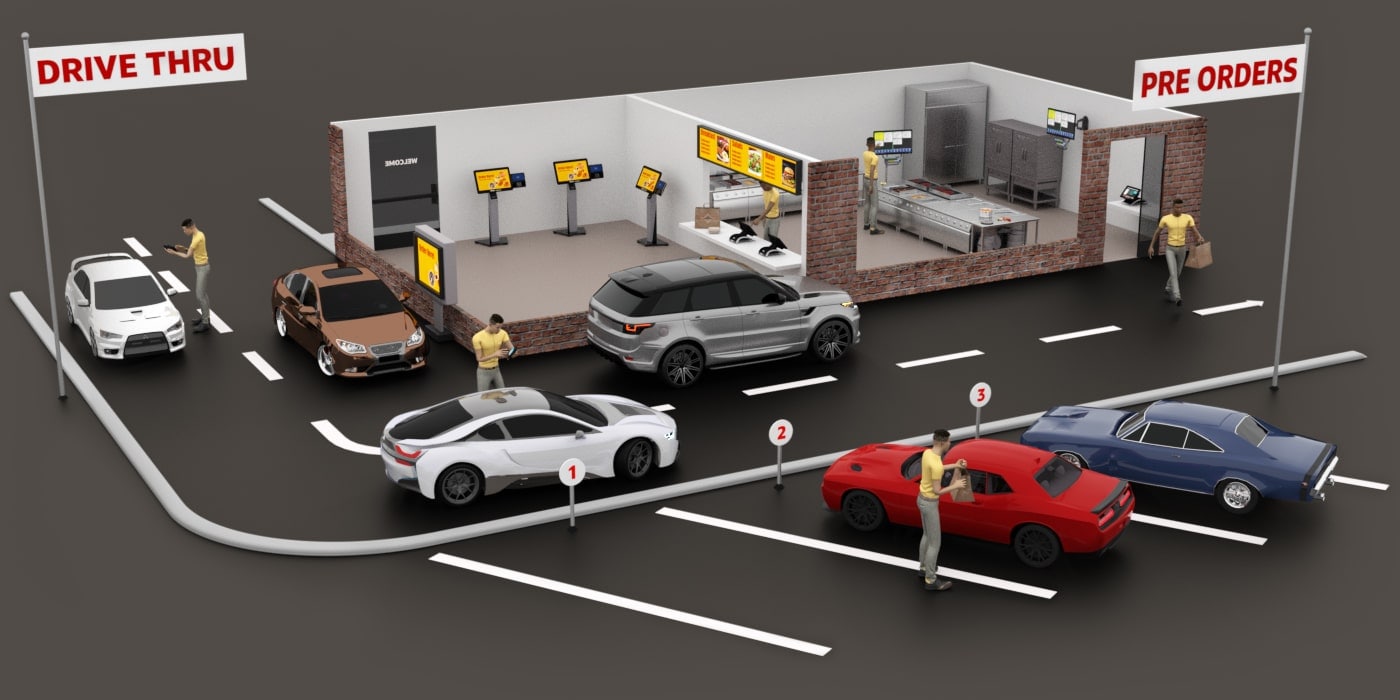From Red's Giant Hamburg to McDonald's Drive-Thru: The Evolution of Fast Food on Wheels
Fast food has become a staple of American culture. It's quick, convenient, and satisfies cravings with minimal effort. But it wasn't always this way. Before the drive-thru revolution, people had to physically go inside a restaurant to order their food. Today, drive-thru lanes are ubiquitous, making up more than 70% of fast food sales in the US. But how did we get here, and what does the future of drive-thru look like? Let's explore.
The Origins of Drive-Thru
Drive-thru service began in the 1940s with the first drive-in restaurant, Red's Giant Hamburg in Missouri. Customers would park their cars and walk up to a window to place their orders. The drive-thru as we know it today wasn't introduced until the 1950s when Jack in the Box opened the first drive-thru lane in California. The concept quickly caught on, and by the 1970s, drive-thru service was the norm for fast-food restaurants.
Why Drive-Thru is So Popular
The convenience of drive-thru service is undeniable. It allows customers to order and receive their food without ever leaving their car. This is especially appealing to parents with young children or people who are short on time. Drive-thru lanes are also a major source of revenue for fast-food restaurants. They can serve more customers in less time, which leads to higher profits.
The Drive-Thru Experience
The drive-thru experience is a carefully crafted process. Restaurants use technology and training to ensure that customers receive their food quickly and accurately. Drive-thru lanes are equipped with order-taking systems, usually consisting of a speaker and a menu board. Once the order is placed, the customer drives to a window to pay and receive their food. The entire process takes less than five minutes on average.
Challenges of Drive-Thru
Despite its popularity, drive-thru service isn't without its challenges. One of the biggest issues is accuracy. With so many orders being taken at once, mistakes can happen. This is why restaurants use systems like order confirmation screens to ensure that the correct items are being prepared. Another challenge is maintaining fast service during peak hours. Restaurants must have enough staff and equipment to handle the influx of customers. Finally, environmental concerns have become a more significant issue for drive-thru lanes, with concerns over the amount of plastic and paper waste generated.
The Future of Drive-Thru
The future of drive-thru service is evolving. With the rise of technology, we can expect to see more automation in the ordering and payment process. Some restaurants are already using self-ordering kiosks to reduce wait times and increase accuracy. There is also a trend towards healthier, more sustainable fast food, which could mean a shift away from traditional fast food menu items. Additionally, there is a growing interest in delivery services, which could lead to the development of new drive-thru models.
In conclusion, the drive-thru revolution has changed the way we eat. What started as a simple window for ordering hamburgers has turned into a multi-billion dollar industry. The convenience and speed of drive-thru service make it a popular choice for busy Americans, and it shows no signs of slowing down. As we move towards a more automated and sustainable future, it will be interesting to see how the drive-thru model continues to evolve.
Labels: Business, Interesting


0 Comments:
Post a Comment
Subscribe to Post Comments [Atom]
<< Home